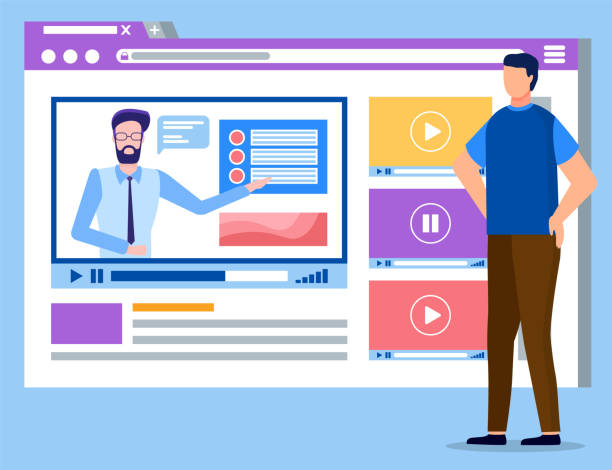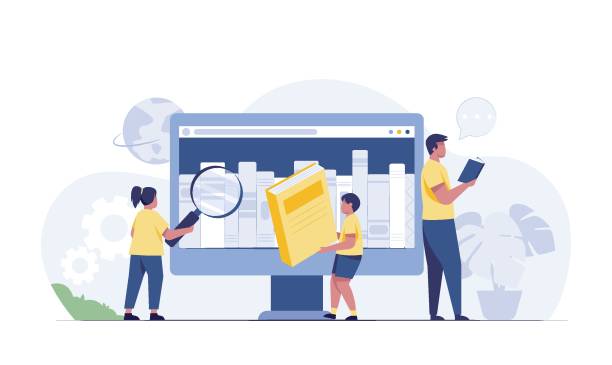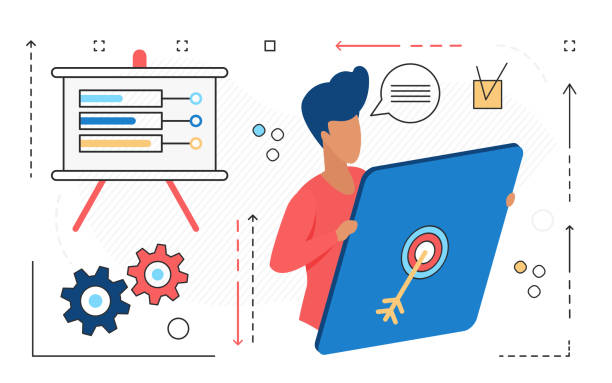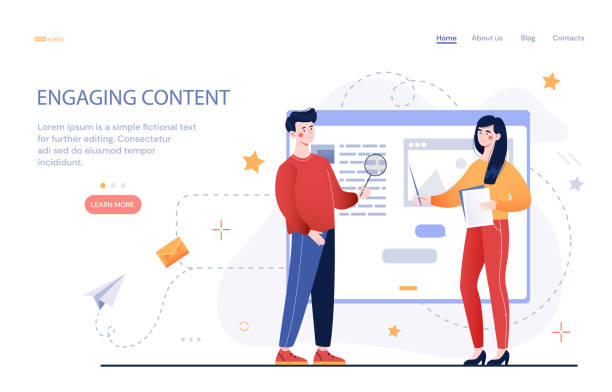Introduction to the Importance of Fast Website Design

In today’s digital world, where online competition has reached its peak, website speed is not just an advantage, but a vital necessity for the survival and success of any business and personal website.
#Website_Speed and #User_Experience are two inseparable and complementary factors that directly impact user engagement with your content.
Extensive research in online user behavior has clearly shown that visitors expect a website to load completely in less than three seconds; any delay beyond this threshold significantly increases the likelihood of users leaving and abandoning the page.
This phenomenon, known as “user bouncing” (Bounce Rate), not only negatively affects user satisfaction and creates a sense of frustration, but is also considered a very important factor in the ranking algorithms of search engines like Google for SEO (Search Engine Optimization).
A fast website design and optimized approach not only helps attract more organic traffic through better search results rankings but also significantly increases the conversion rate by improving user experience.
For example, a high-speed e-commerce website can mean an increase in successful purchases and a reduction in abandoned shopping carts.
This educational section has been compiled with the aim of clarifying why you should never overlook the importance of fast website design.
In fact, every millisecond of loading delay can mean lost business opportunities and reduced revenue, which, in today’s competitive market, can be irreversible.
The questionable content discussion is: does speed come at a cost that must be paid? The answer is undoubtedly a resounding yes.
Investing in website speed optimization is a strategic and returnable investment that, over time, will yield significant benefits, not only through increased revenue but also through improved brand reputation and customer loyalty.
Therefore, a deep understanding of all factors affecting speed and the implementation of effective and comprehensive strategies for fast website design are vitally important to enable you to step onto the path of online success and surpass your competitors.
Your online sales aren’t what you expected? With RasaWeb, solve the problem of low sales and poor user experience forever!
✅ Increase visitor-to-customer conversion rates
✅ Create a pleasant user experience and increase customer trust
⚡ Act now for a free consultation!
Why is Website Speed Crucial? Impact on User Experience and SEO

#Website_Speed_Impact and #SEO, as mentioned, are two sides of the same coin and have a direct and strong relationship with each other.
Google and other search engines, aiming to provide the best experience to their users, consider page loading speed as an important and vital factor in their ranking algorithms.
This means that even if your website is rich and high-quality in terms of content, but loads slowly, it may not achieve a suitable position in search results and effectively remain hidden from the audience.
From a User Experience (UX) perspective, a slow website can be very frustrating and annoying.
Modern users, especially younger generations, have little patience for delays and, if faced with slowness, quickly migrate to competitors’ websites that offer a faster experience.
This is especially crucial for e-commerce websites, where every small delay can mean abandoned shopping carts, lost sales, and direct financial losses.
This explanatory section clearly demonstrates that having a high-speed website not only means greater customer satisfaction and loyalty but also directly contributes significantly to increased organic traffic, improved search engine rankings, and ultimately, increased sales and revenue.
Recent research has shown that even a 100-millisecond improvement in page load time can lead to a 1% increase in conversion rate, statistics that clearly attest to the strategic and economic importance of fast website design.
Therefore, every part of the website, from optimizing images and videos to JavaScript and CSS codes, must be designed and implemented with the primary goal of optimizing loading speed and providing an unparalleled and smooth user experience.
Technical Factors Affecting Website Design Speed and Solutions

#Website_Technical_Factors and #Performance_Optimization form the backbone of any fast and efficient website design.
A deep understanding of these factors and applying appropriate solutions for each can make a significant difference in your website’s loading speed.
Various factors, including choosing suitable hosting, image optimization, reducing the size of CSS and JavaScript codes, and smart use of caching, can directly affect the overall site speed.
Inappropriate, shared, and old or underpowered hosting can be one of the most common and destructive reasons for your site’s slowness.
A fundamental and evergreen guidance in this regard is to always look for high-quality hosting with SSDs (Solid State Drives) and powerful, optimized servers for your website’s needs.
Furthermore, large uncompressed images are considered among the most common reasons for slow page loading on websites.
Image optimization through proper compression and the use of next-generation formats like WebP, which have smaller sizes and better quality, can make a significant difference in loading speed and, consequently, your high-speed website.
This specialized section introduces these factors in detail and provides practical and proven solutions for each, so you can confidently move towards a high-speed and optimized website.
Additionally, reducing the number of HTTP requests from the server and using GZIP compression for text data are other crucial techniques that must be seriously considered in the fast website design process.
| Impact Factor | Explanation | Optimization Solution |
|---|---|---|
| Hosting and Server | Quality, geographical location, and server type (shared, virtual, dedicated) directly impact response time and stability. | Choosing quality SSD hosting, servers close to target audiences, using CDN. |
| Image and Media Size | High-resolution and improperly compressed images and videos significantly increase page size and loading time. | Compressing images without losing quality, using WebP, SVG formats, Lazy Loading for media. |
| CSS and JavaScript Codes | Large, redundant, or unoptimized codes increase browser processing time and delay page rendering. | Minification (reducing size), Concatenation of files, Defer/Async Loading for JS, removing unused codes. |
| Caching | Not storing static website resources in the user’s browser cache leads to re-loading on every visit. | Configuring browser caching headers, using server caching plugins and systems (like Redis, Memcached). |
| Number of HTTP Requests | Each file (image, CSS, JS) is a separate request to the server; a large number of requests increases loading time. | Combining CSS/JS files, using image sprites, embedding small fonts. |
Best Practices for Front-end Optimization and Fast Website Design

#Front_End_Optimization and #Website_Performance are fundamental and vital pillars on the path to achieving a fast website design.
The front-end includes all visual and interactive elements of a website that users directly see and interact with in their browser.
To achieve maximum speed in this section, focus must be placed on reducing the size of all resources, precise font optimization, and using optimal and intelligent loading techniques.
Minification (reducing size) of CSS and JavaScript codes means removing all white spaces, comments, and unnecessary characters from the source codes, which can significantly reduce file sizes and, consequently, minimize their download time.
Additionally, optimizing web fonts by using modern and compressed formats like WOFF2, and loading only necessary subsets of fonts (e.g., only used characters) instead of the entire font set, significantly helps with initial page loading speed.
This is a comprehensive and practical guide for any developer looking to build a fast website and user-friendly site.
Lazy Loading for images and videos, where they are loaded only when the user scrolls to them and they enter the viewport, is also a very effective technique in reducing initial page load and noticeably increasing speed.
Furthermore, focusing on Core Web Vitals (critical web metrics), which include LCP (Largest Contentful Paint), FID (First Input Delay), and CLS (Cumulative Layout Shift), is crucial for building a fast website and providing an excellent user experience, and Google places great importance on them.
These metrics indicate how users perceive the loading speed and interactivity of the site.
Are you bothered by losing customers who came to your site to buy?
RasaWeb is your specialized solution for a successful online store.
✅ Significantly increase your online sales
✅ Build trust and professional branding with customers⚡ Get a free consultation from RasaWeb experts!
Back-end Optimization and Server Settings for Web Loading Speed

#Backend_Optimization and #Server_Configuration are specialized and fundamental aspects that directly affect web loading speed and are often overlooked by ordinary users.
Server performance and back-end infrastructure can be the main bottleneck for a website’s speed.
Choosing an appropriate and optimized programming language and framework, optimizing database queries, and intelligently using server-side caching all contribute significantly to increasing the server’s response speed to user requests.
For example, using a well-designed database and optimizing table structures and indexes can drastically reduce the response time to requests.
Modern architectures like microservices and using powerful server-side caching systems such as Redis or Memcached can reduce server load and significantly improve overall system performance.
This analytical section delves deeper into these factors and provides practical and proven solutions for increasing web loading speed.
Correct configuration of web servers like Nginx or Apache, and enabling GZIP compression for transferring text data (HTML, CSS, JS) from the server to the browser, are also essential measures for fast website design.
Additionally, keeping server software updated, including the operating system, web server, and programming languages (such as using the latest versions of PHP or Python), can significantly help improve performance and security, as newer versions typically include many performance optimizations.
Using CDN and Caching Strategies to Increase Speed

#Content_Delivery_Network (#CDN) and #Caching_Strategies are two powerful and inseparable tools for significantly and sustainably increasing web loading speed.
These technologies complement each other and can collectively improve the user experience dramatically.
A CDN ensures that users always receive content from the geographically closest server by distributing copies of your website’s static content (such as images, CSS, and JavaScript files) across multiple servers (PoPs – Points of Presence) scattered around the world.
This significantly reduces latency and increases loading speed, which is a key guidance for any website with a global or even national audience.
On the other hand, caching allows user browsers and also servers to store copies of your website’s resources.
Thus, for subsequent visits or other users, there’s no need to re-download these resources from the main server, a process that significantly increases loading speed.
This is an important explanatory aspect for understanding how to reduce server load, save bandwidth, and increase web loading speed.
Correct implementation of caching at various levels (browser cache, server cache, CDN cache) and precise configuration of HTTP headers like Cache-Control and Expires to control caching behavior can have an amazing impact on fast website design and its overall performance.
Website Design Speed Testing and Performance Analysis Tools
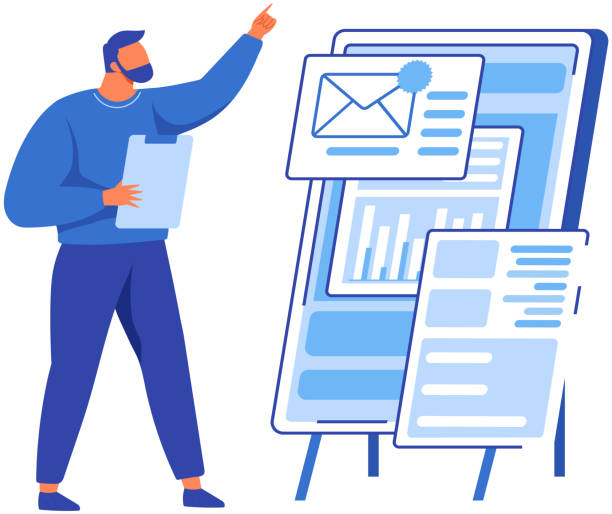
#Website_Speed_Testing and #Performance_Analysis are inseparable and vital parts of the fast website design process and its continuous optimization.
Without using appropriate and reliable tools, accurately diagnosing the site’s performance strengths and weaknesses, and measuring the impact of optimization actions taken, will be practically impossible.
Tools like Google PageSpeed Insights, GTmetrix, and Pingdom Tools provide accurate, comprehensive, and reliable information about your site’s current performance and offer practical and targeted suggestions for improvement by analyzing data.
These tools examine and report various metrics such as full page load time, total page size, number of HTTP requests to the server, and also Google’s Core Web Vitals.
This educational section helps you get acquainted with these tools, learn how to use them correctly to accurately evaluate your fast site building, and leverage their capabilities to identify performance bottlenecks.
A detailed and meticulous analysis of the reports provided by these tools can resolve many hidden and apparent speed issues.
Learning to correctly interpret these results, understanding the concepts behind each metric, and prioritizing corrective actions based on their impact are crucial for achieving a fast and optimized website design.
These tools can effectively assist you in identifying slow-down sources, such as heavy and unoptimized JavaScript scripts, large and unoptimized images, or render-blocking CSS, and pave the way for improvement.
| Tool Name | Key Features | Main Focus |
|---|---|---|
| Google PageSpeed Insights | Scoring based on Core Web Vitals for mobile and desktop, providing improvement suggestions with implementation details. | User-centric and SEO metrics, Google’s suggestions for ranking. |
| GTmetrix | Waterfall Chart for detailed analysis of each resource’s loading time, performance history, page load video recording, ability to change test location. | Deep technical and visual performance analysis, network request details. |
| Pingdom Tools | Displays overall loading time, page size, number of requests, content breakdown by type (HTML, CSS, JS, Image), testing from multiple locations. | Simplicity and speed in providing general and understandable reports. |
| WebPageTest | Testing from various geographical locations, simulating different network speeds, A/B comparison capability, video recording of loading, full rendering details. | Comprehensive analysis and advanced customization for developers. |
Mobile-First Approach and Responsiveness for Fast Website Design

#Mobile_First and #Responsiveness (Responsive Design) are fundamental and vital principles in today’s fast and modern website design.
Given the significant increase in internet users via mobile devices, designing a website that performs well on small screens is no longer merely a competitive advantage, but an undeniable necessity for any online business.
The Mobile-First approach means that the website design and development process is initially done for small screens (mobile) and then gradually scaled and optimized for larger screens (tablet and desktop).
This approach naturally aids in fast website design because it focuses on optimization, simplicity, and resource efficiency from the outset.
Responsive Design also ensures that your website displays correctly on any device, from small-screen smartphones to tablets and large desktops, providing a seamless and optimized user experience.
This news section covers the latest changes and updates to Google’s algorithms that place increased emphasis on Mobile-First Indexing, meaning Google primarily considers your site’s mobile version for indexing and ranking.
Websites that are slow on mobile or provide a poor user experience will not only face high bounce rates but also suffer a significant drop in search rankings.
Optimizing images and scripts for mobile display, and using optimized CSS stylesheets and Media Queries for different devices, are among the fundamental solutions for building a fast website with a mobile-first approach.
Are you tired of your company’s website not meeting your expectations? With RasaWeb, design a professional website that truly represents your business.
✅ Increase attraction of new customers and sales leads
✅ Enhance your brand’s credibility and trust with your audience
⚡ Get a free website design consultation!
Common Mistakes in Website Design and Solutions to Avoid Them

#Common_Website_Mistakes and #Speed_Solutions are key topics in the process of fast and efficient website design that every designer and developer should be aware of.
Many website speed issues users encounter stem from preventable mistakes in the design, development, and even maintenance stages of a site.
Among the most common of these mistakes are: using very high-resolution images without proper compression, unoptimized and redundant coding (such as using old codes or bulky and unnecessary libraries), improper and pervasive caching implementation at various levels, and choosing unsuitable and unreliable hosting.
A precise analysis shows that even installing too many unnecessary or low-quality plugins in Content Management Systems (CMS) like WordPress can significantly reduce site speed and cause software conflicts.
This guide explains how to avoid these common mistakes in your projects by accurately identifying them, and move towards fast and optimized website design.
Simultaneously loading multiple fonts with heavy formats, and calling external scripts from various sources that are not properly managed, can also create a significant overhead on the server and user’s browser, increasing loading time.
You should always prioritize performance optimization at all stages of design and development and regularly monitor and evaluate your website’s performance using reliable tools.
Furthermore, choosing a suitable CMS and precisely optimizing its settings for speed (such as using lightweight and optimized themes, and minimizing essential plugins) is also of high importance to ensure your website always operates at the maximum possible speed.
The Future of Fast Website Design and Emerging Trends

#The_Future_Of_Web_Speed and #New_Trends are constantly evolving and progressing, and the field of fast website design is no exception, but rather at the forefront of these changes.
With the continuous advancement of technology and increasing internet speeds, user expectations for websites also rise.
Trends such as the development and implementation of Progressive Web Apps (PWAs), the widespread adoption of newer network protocols like HTTP/3 and QUIC, and the innovative use of WebAssembly to enhance computational performance in browsers, have opened new horizons in web loading speed and user experience.
PWAs provide a native app-like experience in the browser, offering unparalleled capabilities such as offline functionality, rapid initial loading, and instant interactivity, even under poor network conditions.
HTTP/3, by reducing communication overhead and improving data flow management, promises unprecedented speeds.
This entertaining yet informative section explores these emerging trends and how they will impact fast website design in the near and distant future.
These advanced technologies enable developers to build websites that are not only faster but also more stable, secure, and offer a richer, more interactive user experience.
Investing in knowledge and skills related to these emerging technologies and continuously adapting to new standards ensures the future of fast website design and helps you always stay one step ahead of competitors in the digital space.
Speed is a sustainable competitive advantage.
Frequently Asked Questions
| Question | Answer |
|---|---|
| What is fast website design? | A process for building a website that loads at high speed and provides a smooth and optimized user experience. |
| Why is site speed important? | Increases user satisfaction, improves search engine ranking (SEO), reduces bounce rate, and increases conversion rate. |
| What factors affect site speed? | Page size, number of HTTP requests, image optimization, JavaScript and CSS codes, server speed, and caching. |
| How can site speed be measured? | Using tools like Google PageSpeed Insights, GTmetrix, Pingdom Tools. |
| How can site speed be increased? | Image optimization, file compression (CSS, JS, HTML), browser caching, reducing the number of redirects, choosing suitable hosting. |
| Does fast website design mean low quality? | No, fast design means design focused on speed and efficiency optimization, not reducing design or content quality. |
| What is the role of hosting in site speed? | The speed and quality of hosting servers directly impact the site’s response time and, consequently, loading speed. |
| How can images be optimized for speed? | Using appropriate formats (e.g., WebP), compressing images without significant quality loss, specifying exact dimensions for images. |
| Can complex sites also be fast? | Yes, by using appropriate architecture, code optimization, and resource management, even complex sites can have high speed. |
| Is fast website design the same as Agile development? | No, fast website design focuses on the final outcome (a fast site), while Agile development is a methodology for project management and software development. |
And other services of RasaWeb Advertising Agency in the field of advertising
Smart Digital Advertising: Designed for businesses seeking online growth through engaging UI design.
Smart Sales Automation: A professional solution for online growth focusing on precise audience targeting.
Smart Marketplace: Professional optimization for digital branding using real data.
Smart UI/UX: Professional optimization for digital branding using key page optimization.
Smart Data Analysis: A dedicated service for increasing website visits based on marketing automation.
And over hundreds of other services in the field of internet advertising, advertising consulting, and organizational solutions
Internet Advertising | Advertising Strategy | Advertorials
Resources
10 Tips to Increase Your Site Speed
Building High-Speed Websites: A Comprehensive Guide
The Importance of Website Loading Speed and Methods for Improving It
Secrets of Fast Website Design and User Experience Improvement
For business prosperity and visibility in the digital world, RasaWeb Afarin is your reliable partner. From website design with a modern user interface to comprehensive digital marketing strategies, we are by your side.
For consultation and information on our services, contact RasaWeb Afarin experts.
📍 Tehran, Mirdamad Street, next to Bank Markazi, Kazerun Jonoubi Alley, Ramin Alley, No. 6

